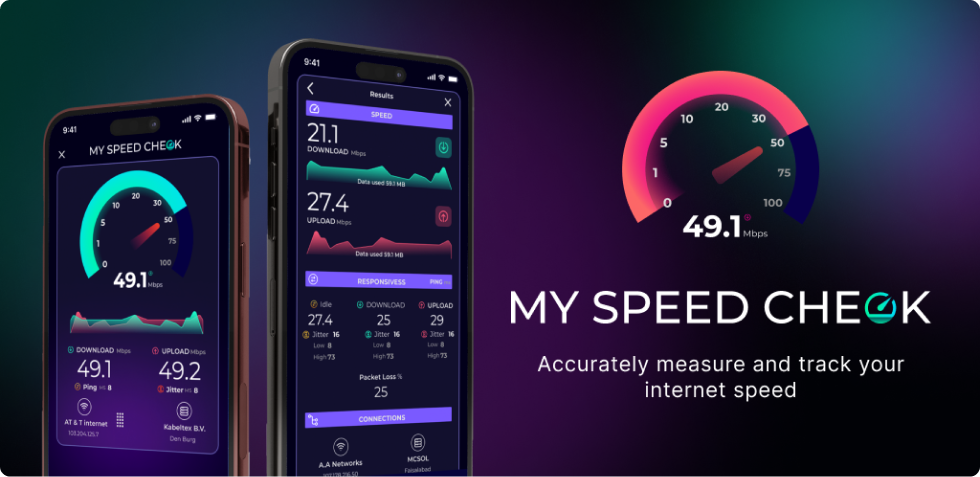-
Armstrong Zoom Broadband Speed Test
If you live in the US and want broadband internet, then Armstrong Zoom is one of the ISPs you can expect to run into. This ISP has a network of both fiber and cable, and the availability depends on the region.
Armstrong Zoom does provide good speeds, but if you are on its cable network, then real-time results can differ from advertised speeds. The Armstrong Zoom speed test can help you identify when that’s happening and even shed light on why.
Why Test Your Armstrong Internet Speed
Here’s why you should test your internet speed if you are a user of Armstrong Zoom.
- Check performance consistency. See if your speeds stay stable during peak evening hours. This is a real problem with cable networks, as they are more susceptible to congestion compared to fiber.
- Verify plan delivery. Similar to the first reason, you can compare real test results against what Armstrong advertises to check if you are being throttled or otherwise shorted in some way.
- Diagnose network slowdowns. Speed tests can help you identify where lag is coming from.
- Plan upgrades. When the number of network users increases, it is not always apparent that an upgrade is required. With the speed test, you can know when your household usage is outgrowing your current speed tier.
- Gather support data. Speed tests help you gather evidence of bad network performance when you are lodging a support ticket with Armstrong Zoom. This can help support agents troubleshoot your problem faster.
How the Armstrong Zoom Speed Test Works
Here’s how you can use the Armstrong Speed Test
- Open the web page in a browser
- You will notice the pulsating “Go” button. Click/tap it.
- The speed test will begin by automatically selecting a nearby server.
You can also change the server by clicking/tapping its name before step 2. You can enter city or country names to find a list of available servers and conduct tests with them.
The test measures the following key performance indicators:
- Download Speed. How quickly you receive data. This is important for streaming and browsing.
- Upload Speed. This is how fast you can send data. Very important for file sharing, video calls, and cloud sync.
- Ping. The reaction time of your connection. Lower ping means smoother gaming and conferencing.
- Jitter: The change in ping. Consistency in ping matters as much as raw speed. High jitter results in lag.
All of these stats combined show how well your connection is performing.
Typical Armstrong Speed Tiers and Expected Results
Because Armstrong has both cable and fiber networks, the speeds can vary a lot between them, even on similar packages. External factors common to both types of networks can also change how much speed users can experience.
Here are some of the typical speed tiers offered by Armstrong and what speeds you can expect to get on them. Keep in mind that all the tiers are symmetrical, so upload and download speeds are the same.
- 100 Mbps Plan. Expect to get around 90–100 Mbps speed. This is ideal for most people and can support everything they do, including streaming, downloading, uploading, calls, etc..
- 300 Mbps Plan. Expect around 270- 300 Mbps speeds. This tier is suitable for multi-device households.
- 500 Mbps Plan. You will typically get around 450–490 Mbps speed. This plan is suitable for most small offices or larger households.
- 1-3 Gbps Plan. Targeted at businesses, with these packages, you can expect download speeds of 950–2300 Mbps and upload speeds of 950+ Mbps. Perfect for most organizations and enterprises..
Improving Your Armstrong Internet Performance
If your results don’t match your plan’s expected speeds, then you can look at the possible causes and their common fixes. Here they are:
- Wi-Fi congestion. Multiple devices can crowd the same channel; this means each has less bandwidth to send data, and so speeds get lowered. To fix this, try the 5 GHz band instead of 2.4, or use a wired connection.
- Outdated routers. Older routers have speed caps of around 100 to 300 Mbps, so any packages with higher speeds will not be able to show their full performance. So, to solve this, replace older routers that don’t support gigabit throughput.
- Network load. On cable networks, the number of people connecting to the same exit node can cause congestion. That’s why during “peak” hours, speeds become slower. There is no way around this except to upgrade to a fiber service (if available).
- Wired vs wireless. Wired tests always yield more speed. That’s why, for the most accurate speed test, connect via Ethernet.
- Background apps. Cloud backups and automatic updates can silently consume bandwidth, which can appear as a lower speed on a speed test.
When to Run the Armstrong Zoom Speed Test
You should run Armstrong speed tests whenever any of the following apply.
- When you notice buffering or lag during streaming.
- Before and after resetting your router.
- After upgrading your plan or equipment.
- During different times of the day to detect peak-hour slowdowns.
- When reporting issues to Armstrong technical support.
Running a speed test in those situations will help you understand your network problems.
